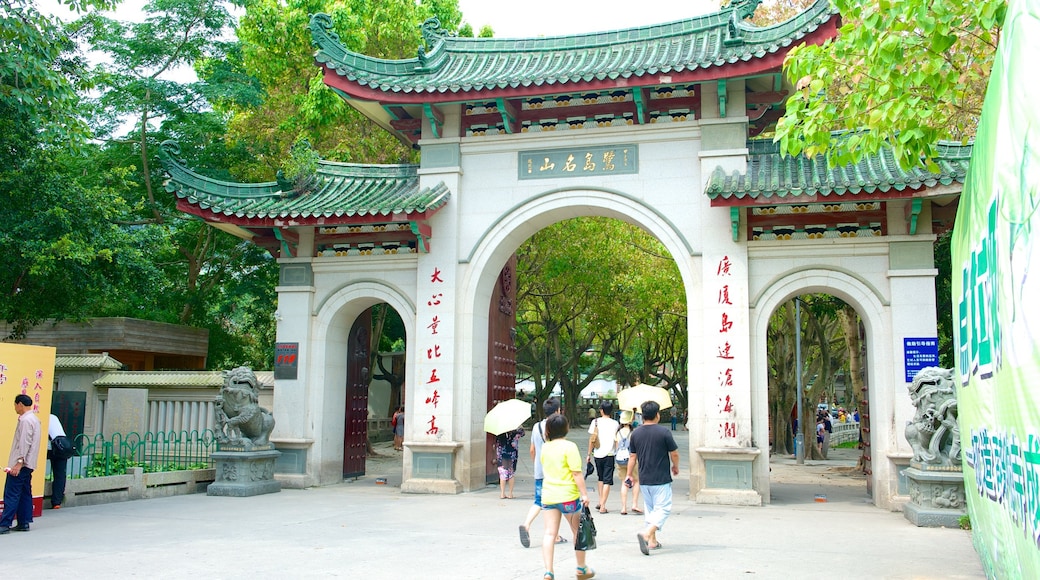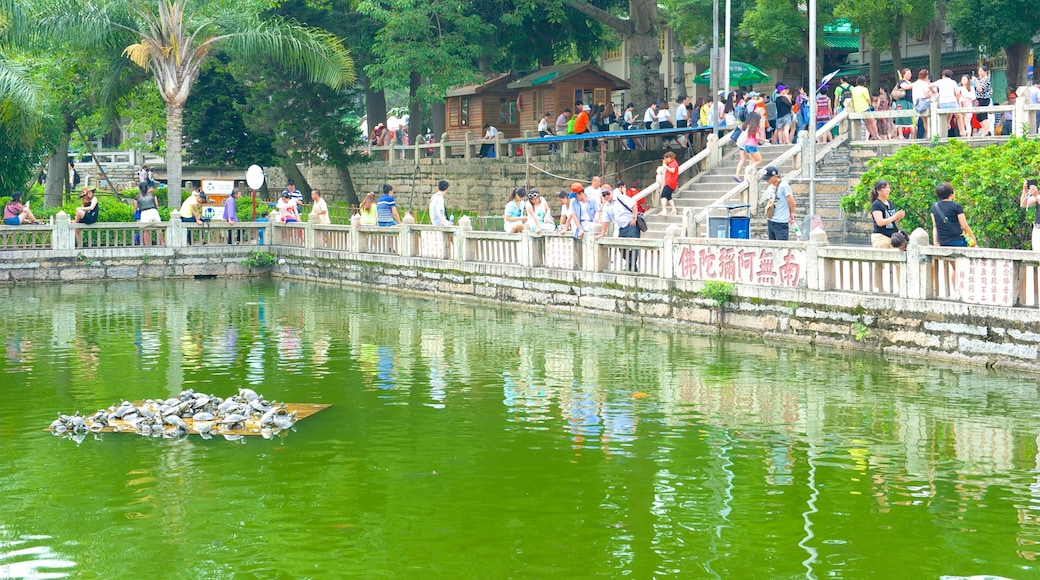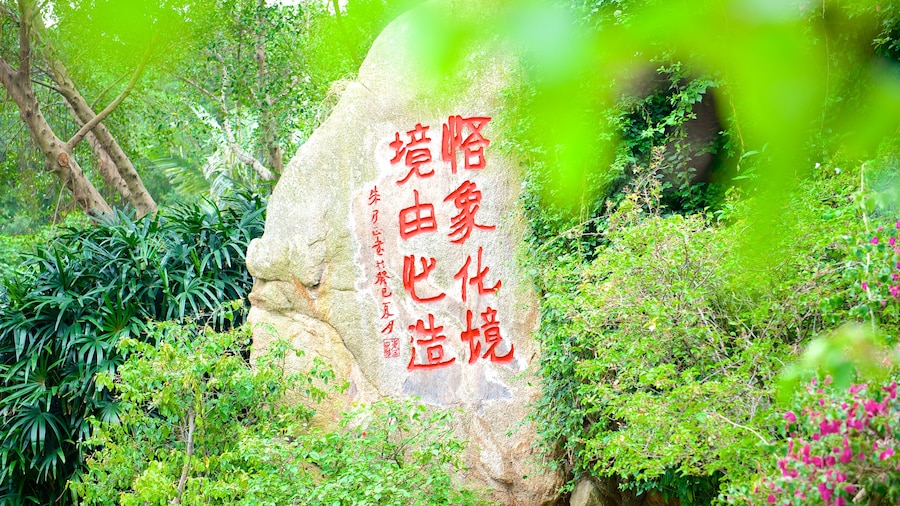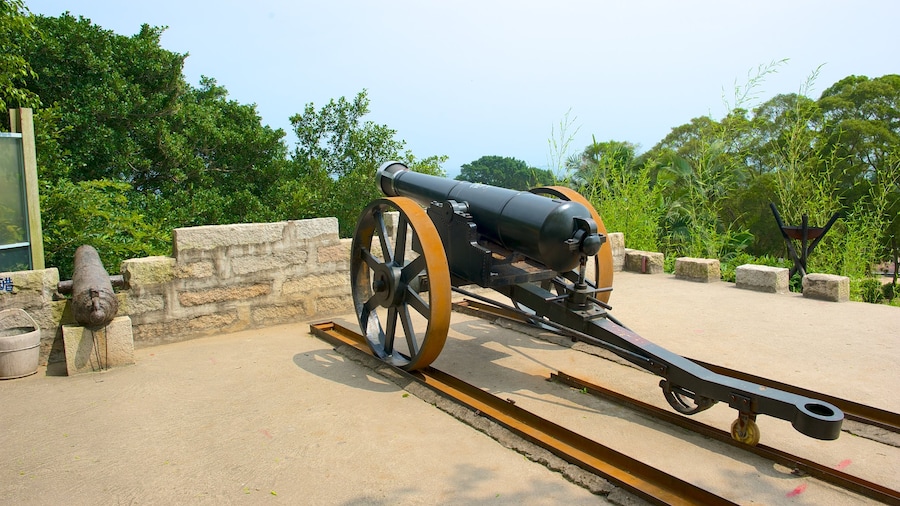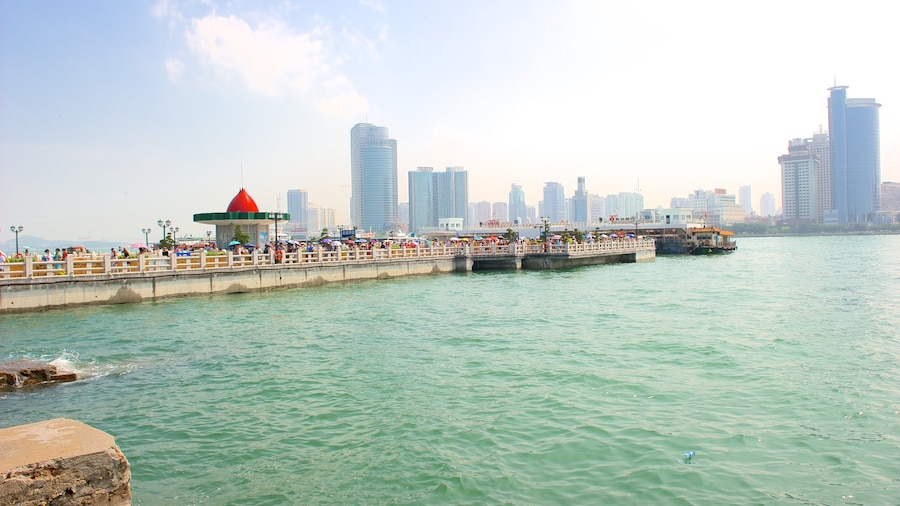วัดหนานผูเต่าเป็นวัดที่มีความงดงามและมีประวัติศาสตร์ยาวนานมากกว่าพันปี ลองเงี่ยหูฟังพระสงฆ์สวดมนต์อย่างพร้อมเพรียงและสูดดมกลิ่นหอมของธูประหว่างเดินชมทะเลสาบที่เต็มไปด้วยดอกบัวบานในบริเวณวัด จากนั้นเดินไปข้างหลังวัดเพื่อขึ้นไปบนยอดภูเขา Wulao บนนั้นมีวิวของเมืองทั้งเมืองที่สวยงามมาก
วัดหลังเก่านั้นสร้างขึ้นตั้งแต่ราชวงศ์ถัง แต่ถูกทำลายและสร้างใหม่หลายครั้งในช่วงหลายร้อยปีที่ผ่านมา วัดที่เห็นทุกวันนี้สร้างขึ้นในช่วงทศวรรษปี 1980 หลังจากที่ถูกทำลายลงในช่วงปฏิวัติวัฒนธรรมหรือ Cultural Revolution ทุกวันนี้ วัดยังคงทำหน้าที่เป็นสถานที่ศักดิ์สิทธิ์สำหรับการเคารพบูชาอยู่เสมอ เพลิดเพลินกับการมองดูคนท้องถิ่นมาเสี่ยงเซียมซี จุดธูปหรือนั่งอ่านคัมภีร์ที่นี่
ด้านหน้าวัดมีทะเลสาบที่เต็มไปด้วยดอกบัว เป็นภาพที่งดงามมาก ลองนั่งพักบนม้านั่งที่ตั้งอยู่ตามริมแม่น้ำ สนามหญ้าที่เต็มไปด้วยร่มเงาต้นไม้ก็เป็นอีกหนึ่งแห่งที่เหมาะสำหรับการพักผ่อน ที่นี่ คุณจะได้รับประทานอาหารมังสวิรัติรสเลิศไปพร้อมๆ กับพระสงฆ์ภายในวัด
อย่าลืมแหงนหน้ามองหลังคาวัดที่ตกแต่งอย่างปราณีตบรรจง ปรากฏทั้งรูปดอกไม้สีสันสดใส สัตว์ในเทพนิยายและรูปปั้นมนุษย์ นอกจากนี้ยังมีรูปปั้นสีทองอร่ามขององค์เจ้าแม่กวนอิมอยู่ภายใน Hall of Great Compassion ด้วย ประติมากรรมนี้เป็นองค์เจ้าแม่กวนอิมที่มีแขน 12 แขนแผ่ออกมา และที่มือแต่ละข้างมีดวงตาดวงเล็กๆ สลักอยู่
ส่วนที่ Devajara Hall คุณจะได้พบกับรูปปั้นของ พระศรีอริยเมตไตรยที่สร้างขึ้นมาพร้อมลักษณะของรอยยิ้มเบิกกว้างและพุงขนาดใหญ่ และยังมีรูปปั้นของ Wei Tuo อยู่ด้านหลังพระศรีอริยเมตไตรยด้วย Wei Tuo เป็นผู้สืบทอดคำสอนของชาวพุทธและรูปปั้นนี้อยู่ในอิริยาบทที่กำลังถือไม้ชี้ลงผืนดิน เป็นสัญลักษณ์แสดงว่าวัดมีความมั่งคั่งและมีอาหารพร้อมที่พักสำหรับพระสงฆ์ที่ธุดงค์ผ่านมา
ลองเดินขึ้นบันไดด้านหลังวัด เส้นทางนี้จะพาคุณไปยังยอดเขาเพื่อขึ้นไปบนจุดสูงสุดของภูเขา Wulao มีความสูง 190 เมตร เส้นทางที่เต็มไปด้วยต้นไม้นี้เองจะพาคุณเดินผ่านถ้ำและพาคุณไปพบกับรูปแบบการก่อตัวของหินที่น่าสนใจ จากข้างบน คุณจะมองเห็นวิวของวัดที่อยู่เบื้องล่าง และยังเห็นทะเลที่ทอดยาวไปยังเกาะ Jinmen ด้วย
วัดหนานผูเต่าตั้งอยู่ ณ ปลายภูเขา Wulao ใกล้กับทางเข้ามหาวิทยาลัยเซี่ยเหมิน สามารถเดินทางไปยังวัดได้โดยรถประจำทางจากสถานีรถไฟหรือท่าเรือของเซี่ยเหมิน

